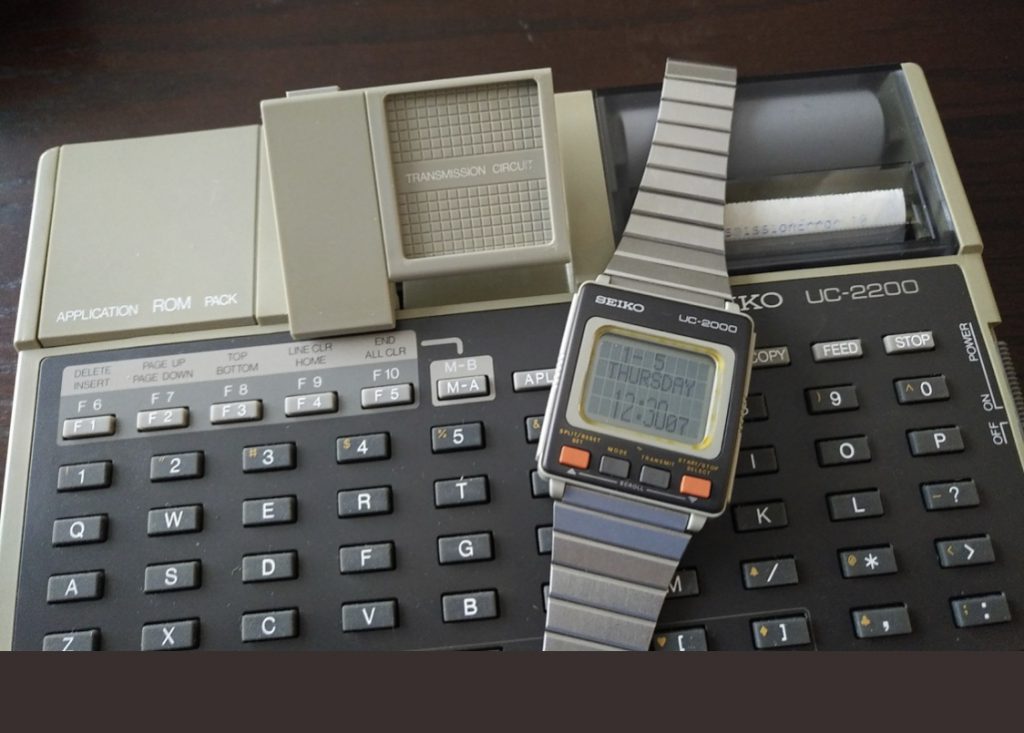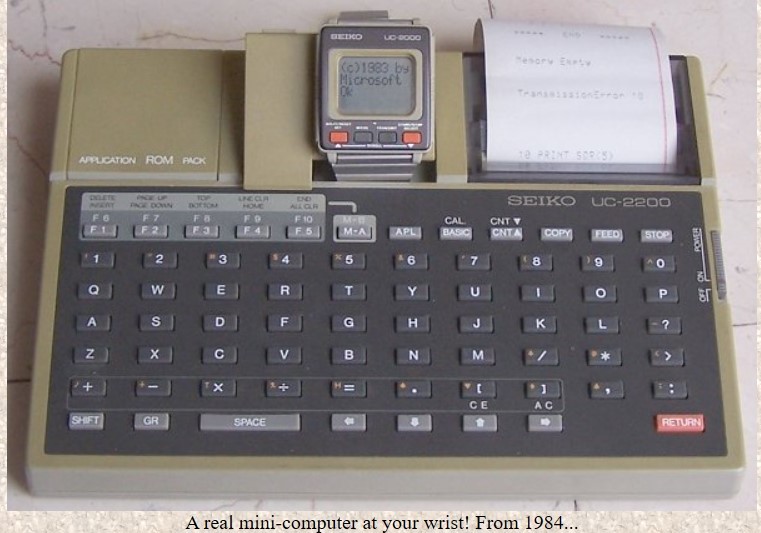
Anno 2020 zijn er vele mensen die met een smartwatch rondlopen. Het woord ‘smartwatch’ doet me denken aan dat intrigerende horloge begin tachtiger jaren dat ik graag als gadget wilde hebben. Het was uit de Seiko-serie, een programmeerbaar horloge op basis van Microsoft-software. Het eerste werd in 1983 geïntroduceerd, en opvolger UC-2000/2200 in 1984. Als early adopter was ik er als de kippen bij. Gekocht in – gek genoeg – een juwelierswinkel, aan de Lange Poten in Den Haag, als ik me goed herinner. Inmiddels dus 36 jaar geleden! Dat stuk elektronica heb ik al lang niet meer, maar goede herinneringen borrelen op.

Op internet is allerlei informatie over die vroege ‘smartwatches’ te vinden. Wikipedia zegt onder meer het volgende: ,,The first digital watch, which debuted in 1972, was the Pulsar manufactured by Hamilton Watch Company. “Pulsar” became a brand name which would later be acquired by Seiko in 1978. In 1982, a Pulsar watch (NL C01) was released which could store 24 digits, making it most likely the first watch with user-programmable memory, or “memorybank” watch.”
En dan komt mijn horloge: With the introduction of personal computers in the 1980s, Seiko began to develop computers in the form of watches. The Data 2000 watch (1983) came with an external keyboard for data-entry. Data was synced from the keyboard to the watch via electro-magnetic coupling (wireless docking). The name comes from its ability to store 2000 characters.
Een andere bron op internet meldt: Before smartwatches, there was the Seiko UC-2000 wrist computer. This wearable computer may look advanced, but it was only capable of storing 2K of data, telling the time, and performing calculator functions. The gadget made its debut in 1984, and retailed for $300 ($689.04 in today’s dollars).
UC-2000 owners could purchase the UC-2200, an advanced keyboard that included a spool-fed printer, 4K of RAM and a 26K of ROM via a plug-in Application ROM pack (Microsoft Basic) – other ROM packs had games or an English to Japanese translation app.
https://gtello.pagesperso-orange.fr/seiko_e.htm